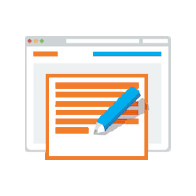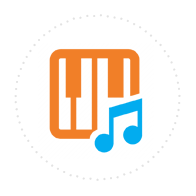Musika Quick Stats
24 Years
Since We Started
41,456+
Happy Customers
10,769
Cities with Students
3,123
Teachers in Network
Lesson Special - Up to 20% OFF! Get Started Now with a Risk-Free Trial!
Here are just a few of the many teachers offering Violin lessons in Minneapolis . Whether you are looking for beginner guitar lessons for your kids, or are an adult wanting to improve your skills, the instructors in our network are ready to help you now!
Instruments: Violin Viola
I use a variety of books for teaching, and prefer to not use just one. It is essential for students to study scales and arpeggios, so a scale book, typically the Flesch Scale book is required. Other books I use are -Suzuki -Solos for Young Violinists/Violists -For Strings (Though I use Suzuki books, I do NOT teach the Suzuki method. I strong emphasize music reading literacy, and this requires the ability to understand by reading, and not by hearing alone). Read More
Instruments: Violin Cello Viola
THE DOUNIS METHOD - The secret of being a truly great string player is to make the instrument an extension of the body not vice versa. This is accomplished by using your native instincts which are strongest when you are a child, but can be rediscovered later. When all technique is based on these instinctive movements then the expression is released. Your creative potential is unlocked. This kind of playing conveys a natural musical authority because it is completely based on your own musical impulses. Read More
Instruments: Piano Guitar Voice Violin Cello Viola Trumpet Trombone Saxophone Flute Clarinet Drums Bass Guitar Organ Synthesizer Accordion Banjo Ukulele Mandolin Recorder Electric Violin Fiddle Double Bass French Horn Tuba Piccolo Mallet Percussion Orchestral Percussion Oboe Bassoon English Horn Conga Music Keyboard Electric Guitar Classical Guitar Acoustic Guitar
I am an instructor who tailors lessons based on the student's desires. Having been a performer since I was 13 years old, I work as a musical coach. My performing experience varies from pop, rock, country, jazz, hard rock, contemporary Christian and classical. I am a classically trained pianist and vocalist. Currently I play in a trio that performs regularly at nursing homes. I love bringing joy to the elderly by playing their favorite sing alongs as well as teaching them current music. Read More
Instruments: Piano Guitar Voice Violin Cello
Piano: I prefer Faber Piano Adventures, but I can be flexible if the student is in the middle of another series already. I have also taught the young beginner series by Faber. Strings: I use a traditional approach, but I am not tied to any particular method book. I can supplement whatever is being taught in school or the lessons can stand on their own. I have taught anywhere from Kindergarten to adult ages. Read More
Instruments: Violin
My teaching experience started in 2010 at my own studio in Alexandria, MN. Since moving to the Minneapolis area, I have regrown my studio in this region. I work with students to achieve their goals which can be anywhere from advanced student goals, beginner students learning for fun, and adult students learning a music instrument as a hobby. My emphasis is on creating a fun, safe environment where I can help students identify methods of practice that will help them succeed long-term in their home practice. Read More
Instruments: Piano Violin Viola Fiddle Keyboard
My musical life has been extraordinary. Born in Mpls. MN, I attended the Aspen Musical Festival before my departure to Vienna Austria for Master studies in Violin/viola and piano. Scholarship intended for one year ended up a 25 year tenure, teaching, performing in Vienna and raising a family. I returned to the US to become executive director of a music school in MN. I was able to start new after school music programs for elementary schools throughout the district, start an orchestra program and open a theater program for kids. Read More
Instruments: Guitar Electric Guitar Acoustic Guitar
What advice do you have about practicing effectively?
In the beginning of learning a new skill, whether it be a new scale or a new solo, I always recommend using a tape recorder (or app) and a metronome. Recording yourself and playing that recording back may seem uncomfortable at first, but I find students love hearing their improvements from day one and on for themselves. In addition to the recordings, a metronome can be incredibly useful when learning to fluently play a new scale or passage. Having the appropriate phrasing and timing is also quite practical when playing in a band situation, so these skills can pay off in a big way!
How do I know if my child is ready to start lessons?
A student's readiness for lessons is based on a number of factors that may be present in some and not in others. A big pre-requisite for taking lessons, particularly in younger students, is a genuine interest in learning the instrument. A student who is not interested in the content obviously will not retain the information as well as one who is passionate about what they're learning. As far as an age range goes, I've seen students as young as three take music lessons. However, kids usually form a genuine interest in learning around 7 and up from my personal experience.
When will I start to see results?
That question is sometimes more difficult to answer than people give it credit for. Typically, I do not like to put timetables or due dates on a student's progression. Doing this is an easy way to demotivate and un-inspire even the best of players. Instead, I encourage students to set personal goals for themselves. This teaches the student the incredibly useful skill of taking accountability for their own progress. If a student sets a goal for themselves, it's not their instructor who keeps them honest, it's themselves. And that is the true measure of progress.
Why did you choose your primary instrument?
I chose the guitar for a few reasons, but they can be summed up in two words: Jimmy Page. I grew up listening to classic music that my dad had on in the workshop all of the time, such as Led Zeppelin, Van Halen and Guns N Roses to name a few. I didn't know what the feeling was I got when I listened to this music when I was younger, but as I got older, I recognized that feeling as inspiration. I was inspired, fascinated and most of all engaged by guitar oriented rock, so when I was in my early teens, I decided I wanted to learn how to do it myself.
When did you decide to become a professional musician? Was it a gradual decision or was there a defining moment for you?
I decided to be a professional musician pretty much the second I felt the intense happiness I experienced at my first public performance! The first band I'd ever played in got booked to play at a small benefit show and it was off to the races from there. Eventually when I found out I could get payed for my skills is when I decided to focus on music as a career and not simply as a hobby. It was a gradual shift from being a hobbyist, but I also played it safe and kept a consistent day job. Looking back in retrospect, I could have gotten when I am now alot faster by just jumping in!
24 Years
Since We Started
41,456+
Happy Customers
10,769
Cities with Students
3,123
Teachers in Network
Trusted as the industry leader, for over 21 years the teachers in our network have been providing Violin lessons in Minneapolis to students of all ages and abilities.
We'll then reach out to the teachers for you.
Schedule the risk-free trial lesson directly with the teacher.
Continue with that teacher or try someone else.








Sri
Looking for a violin teachers who teach my 12year old. He is a beginner. I'm looking for teachers who can travel to my home. I m looking for 45mins lessons.
artemis
I have a 8 year old.her teacher is on maternity leave and we need a temporary effective violin teacher to help her with reading notes and her school orchestra pieces.
Siddharth
My 12 year old som has expressed desire to learn playing the violin. We are looking for a teacher who can help him learn and enjoy the process of learning.